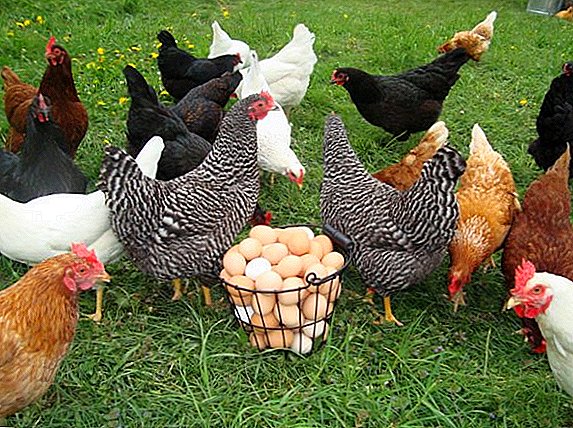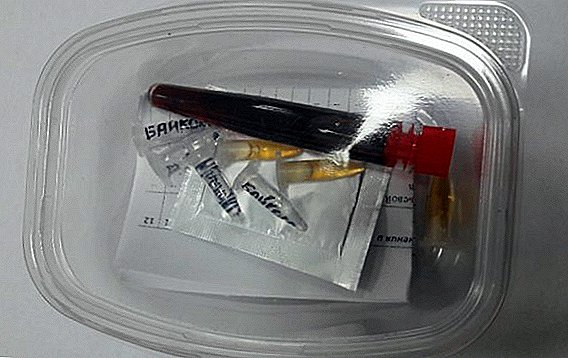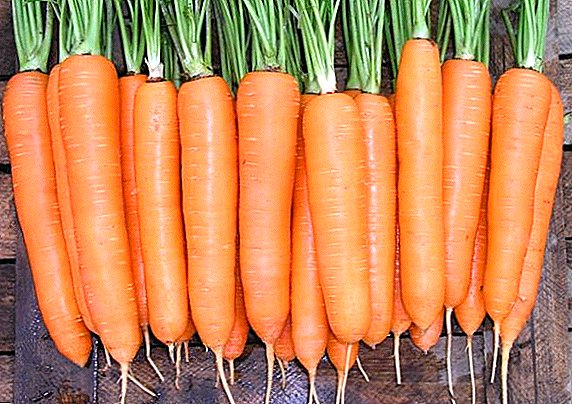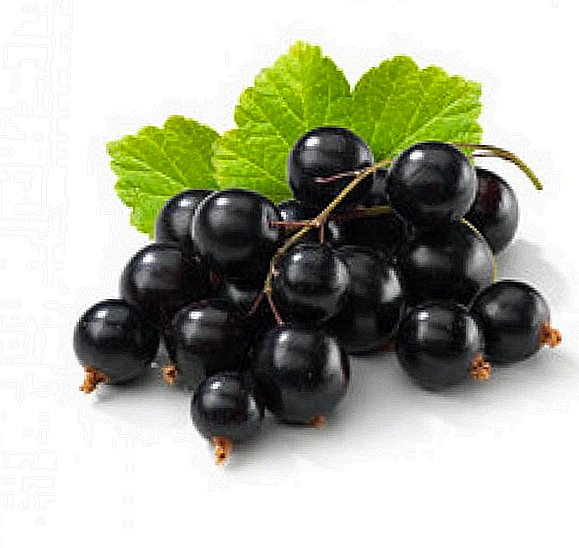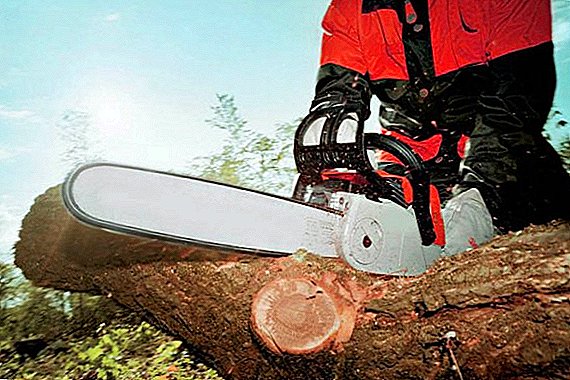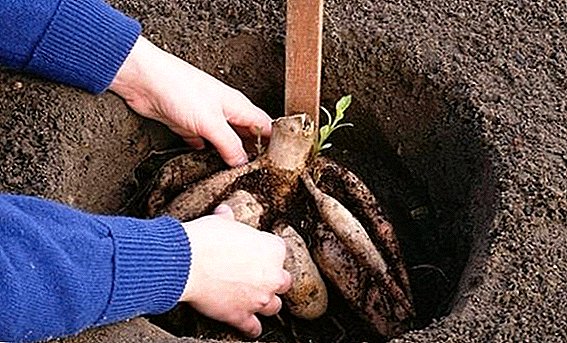
There is always fresh carrot on the shelves in the winter. It was she who supplies the meager winter menu with a variety of beneficial trace elements. It is put in soups, salads, side dishes and even added to sweet desserts.
If you have your own land plot or you purchase large quantities of carrots in advance for the winter, while it is still cheap, you need to learn how to store it properly. If the method or storage conditions are chosen incorrectly, the root crop will not survive the winter and will quickly deteriorate.
Features of the structure of the root
 Carrot has a dense, firm structure and thin skin. The harder it is, the better and longer it will be stored. Therefore, before choosing a method of storage, sort a good solid carrot from root crops with internal and external damage.
Carrot has a dense, firm structure and thin skin. The harder it is, the better and longer it will be stored. Therefore, before choosing a method of storage, sort a good solid carrot from root crops with internal and external damage.
If the carrot feels sluggish to the touch, there are cracks, traces of pests, or the skin is badly torn off - it should be stored in other ways: salt, dry in a dryer or freeze.
Which grade to choose?
For storage only late varieties of carrots are used.that are cleaned after the first frost: approximately, from mid-September to mid-October:
- "Valeria".
- "Moscow Winter".
- "Incomparable".
- "Chantenay".
- Losinoostrovskaya.
For example, on loam vegetables grow faster and ripen betterthan the same varieties grown on heavy soils (clay, heavy loam)
Storage methods in the cellar
The most common way to store carrots in winter is in the cellar or basement of an apartment building. In such places a low constant temperature (+ 2 ° C or -2 ° C) and high humidity is maintained. But if the temperature starts to fluctuate or the humidity becomes less than 90-95%, the conditions for storage will become unfavorable. Therefore, these indicators need to constantly monitor and maintain.
For the long-term storage of carrots in the cellar, several different methods are used.which allow to keep constant temperature and level of humidity. Choose the method of preparation and storage that suits you.
In a river sand box
 Normal river sand well retains the desired humidity and air permits, so the vegetables are not covered with mold and stay in comfortable conditions. Sand must be poured into a pre-dried box and laid in layers: a layer of carrots, a layer of sand. Root vegetables should not be in contact with each other.
Normal river sand well retains the desired humidity and air permits, so the vegetables are not covered with mold and stay in comfortable conditions. Sand must be poured into a pre-dried box and laid in layers: a layer of carrots, a layer of sand. Root vegetables should not be in contact with each other.
Pick up the sand correctly. To do this, put a handful of sand in your hand, firmly squeeze, and then open your fist. If the sand has crumbled, it is too dry, and if it has broken up into lumps, use it safely.
Watch the video about storing carrots in river sand:
In sawdust
 If there is no sand, but there is dry pine sawdust, they can also be used to create suitable storage conditions. Due to the phenolic substances in their composition, sawdust does not allow microorganisms to propagate and prevent the vegetables from rotting. Root crops are poured with sawdust in layers and so that they do not touch each other.
If there is no sand, but there is dry pine sawdust, they can also be used to create suitable storage conditions. Due to the phenolic substances in their composition, sawdust does not allow microorganisms to propagate and prevent the vegetables from rotting. Root crops are poured with sawdust in layers and so that they do not touch each other.
In a wooden box
 You can not use different fillings, such as sawdust, sand or moss, but take wooden or cardboard boxes with a lid and place them in the cellar at a distance of 10-15 cm from the walls (if you put closer, moisture from damp walls can get into the boxes). Boxes need to be put on a small stand and put carrots in them.
You can not use different fillings, such as sawdust, sand or moss, but take wooden or cardboard boxes with a lid and place them in the cellar at a distance of 10-15 cm from the walls (if you put closer, moisture from damp walls can get into the boxes). Boxes need to be put on a small stand and put carrots in them.
20 kg of carrots can be placed in one box. It is necessary to periodically check the condition of vegetables and turn them over.
In a solution of chalk
 Chalk has alkaline properties and does not allow microorganisms to multiply.so it is great for storing carrots. To create a chalky solution, chalk (200 g per 10 kg of vegetables) must be diluted with water, stirred until homogeneous and dipped in each carrot. After that, the roots are dried and sent to the cellar.
Chalk has alkaline properties and does not allow microorganisms to multiply.so it is great for storing carrots. To create a chalky solution, chalk (200 g per 10 kg of vegetables) must be diluted with water, stirred until homogeneous and dipped in each carrot. After that, the roots are dried and sent to the cellar.
In a clay shell
 This is a rather dirty way, but effective: before sending the root crops for storage, carrots are dipped into the prepared mass of clay and water. Clay should completely cover every vegetable.
This is a rather dirty way, but effective: before sending the root crops for storage, carrots are dipped into the prepared mass of clay and water. Clay should completely cover every vegetable.
After it dries, the carrot is placed in boxes and sent to the cellar.
In regular packages
 Plastic bags are not the best solution, but if you have neither sawdust, nor sand, nor chalk with clay, you can try it. The main thing is to do everything right: well dried, trimmed root vegetables are placed in bags and placed on a low stand.
Plastic bags are not the best solution, but if you have neither sawdust, nor sand, nor chalk with clay, you can try it. The main thing is to do everything right: well dried, trimmed root vegetables are placed in bags and placed on a low stand.
At the bottom of the bags you need to make holes through which the condensate will flow. No need to tie bags. Instead of polyethylene can be used and canvas bags.
How to keep carrots in banks?
Save the carrot in the cellar in its raw form can be not only in the boxes, but also in banks, for example, 5 or 3-liter. To do this, you first need to prepare the banks: wash and dry well. It is advisable not just to wash with detergent, but to boil, as before preservation.
The prepared carrots are placed vertically and so that there is still a small distance between the fruits. In a jar, you can put a small horseradish root or sprinkle with coniferous sawdust. Banks need to be put in the cellar, the lids do not close. There are several ways.
In the fridge with salt
 For this method, you need the usual salt and grater. Grate carrots on a coarse grater and place in clean jars (of any volume), sprinkling salt in layers. Such preparation is stored in the refrigerator up to 6 months. But the dishes in which it will then be used can not be salted, otherwise the food turns salty.
For this method, you need the usual salt and grater. Grate carrots on a coarse grater and place in clean jars (of any volume), sprinkling salt in layers. Such preparation is stored in the refrigerator up to 6 months. But the dishes in which it will then be used can not be salted, otherwise the food turns salty.
Raw in the freezer
 If you have a large chest freezer for blanks, it is perfect for storing carrots. To do this, the roots first need to be thoroughly washed, dried and peeled, cut into bars and put in a dry jar. Filled containers are sent to the freezer, where they can be stored for several months.
If you have a large chest freezer for blanks, it is perfect for storing carrots. To do this, the roots first need to be thoroughly washed, dried and peeled, cut into bars and put in a dry jar. Filled containers are sent to the freezer, where they can be stored for several months.
In dried
 Jars can store not only fresh or pickled carrots, but also dried. To do this, root vegetables are rubbed on a coarse grater and dried (in a special dryer, oven or the sun).
Jars can store not only fresh or pickled carrots, but also dried. To do this, root vegetables are rubbed on a coarse grater and dried (in a special dryer, oven or the sun).
Then the blanks are placed in glass jars, closed with lids.
Watch the video on the storage of carrots in dried form:
With garlic and thyme
 This is not just a storage method, but a recipe. The carrot is peeled, cut into cubes, distributed in cans and filled with hot marinade (spices mixed in boiling water, vegetable oil, salt, sugar).
This is not just a storage method, but a recipe. The carrot is peeled, cut into cubes, distributed in cans and filled with hot marinade (spices mixed in boiling water, vegetable oil, salt, sugar).
Along the way, garlic, mustard and thyme seeds are added to jars.. Banks roll up, cool down and go to the cellar or to the balcony for long-term storage.
If something went wrong
If it happened that you did everything right, but the carrot still starts to rot and becomes covered with mold, immediately take the following actions:
- Consider other vegetables, especially if carrots are stored with beets, if they also began to rot, it means that the entire basement is infected, it must be treated with bleach or whitened.
- Check whether enough air enters the banks / boxes / bags.
- Check if there is enough space between the roots.
- Measure the temperature and humidity, perhaps there is a change.
TIP: Do not leave carrots in jars or boxes intact, carefully review everything and select the spoiled root vegetables. The remaining vegetables should be processed with onion peel extract and dried thoroughly.
- How to store if there is no cellar?
- On the bed.
- In a refrigerator.
- In the ground.
- Storage methods and home conservation technology.
Also useful will be the material on how to properly trim the root.
Additional tips
In order for the carrot to be perfectly preserved, you must follow some rules:
- Be sure to revise your stocks at the end of winter when the temperature in the cellar or on the balcony will change dramatically.
- Before storage, vegetables should be washed in running water so that as few microorganisms as possible remain on it.
- Before drying carrots in a dryer or oven, it must be blanched. This will preserve its color and the amount of valuable trace elements in the composition.
Conclusion
For those who have a small amount of carrots and do not have a large area for storage, glass jars are the perfect way. In 3-liter jars, the roots are perfectly preserved. The main thing is to create optimal storage conditions for them and not to mix with spoiled fruits. Carrots with various disadvantages can be dried, pickled or pickled, creating tasty and nutritious preparations for the winter.




